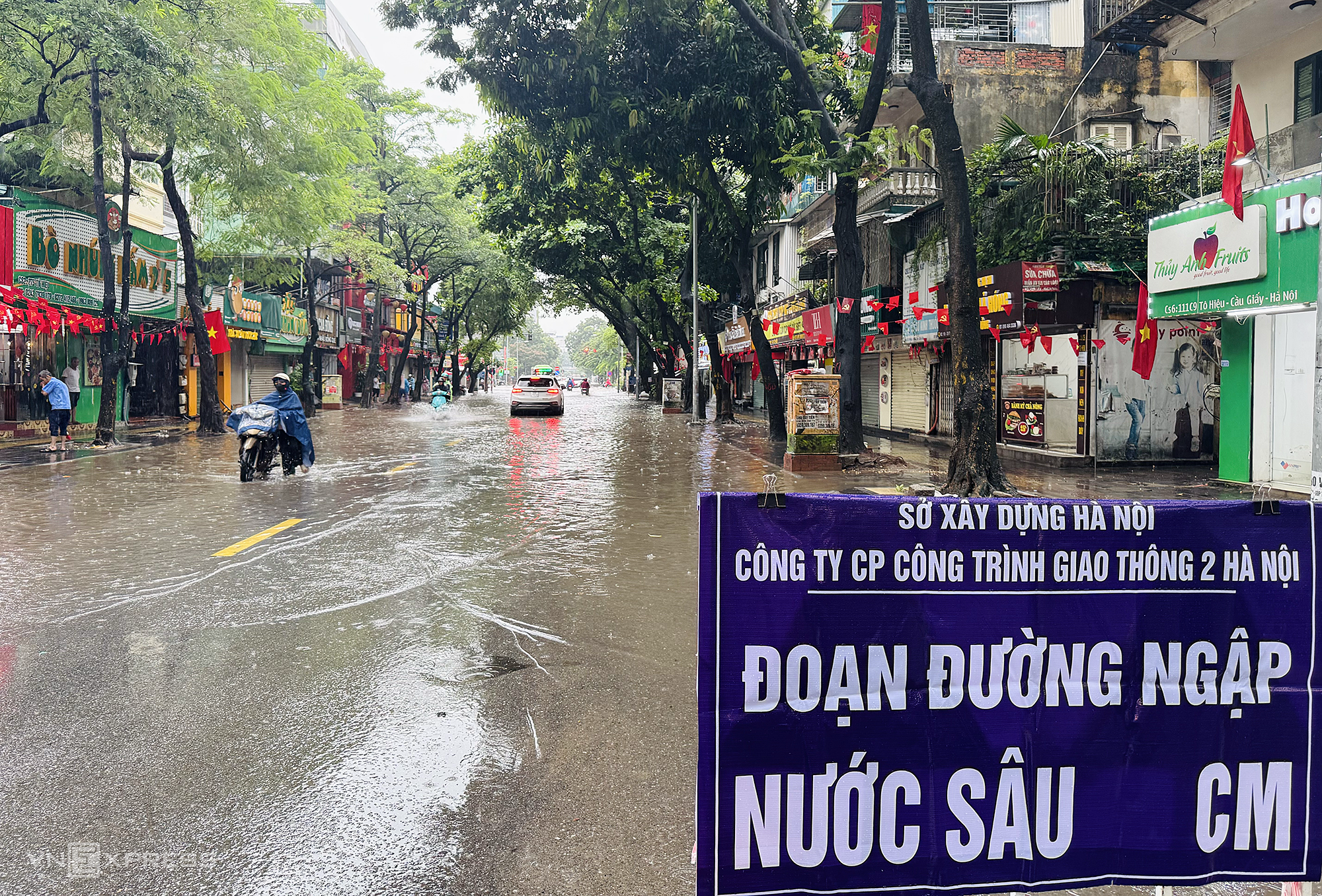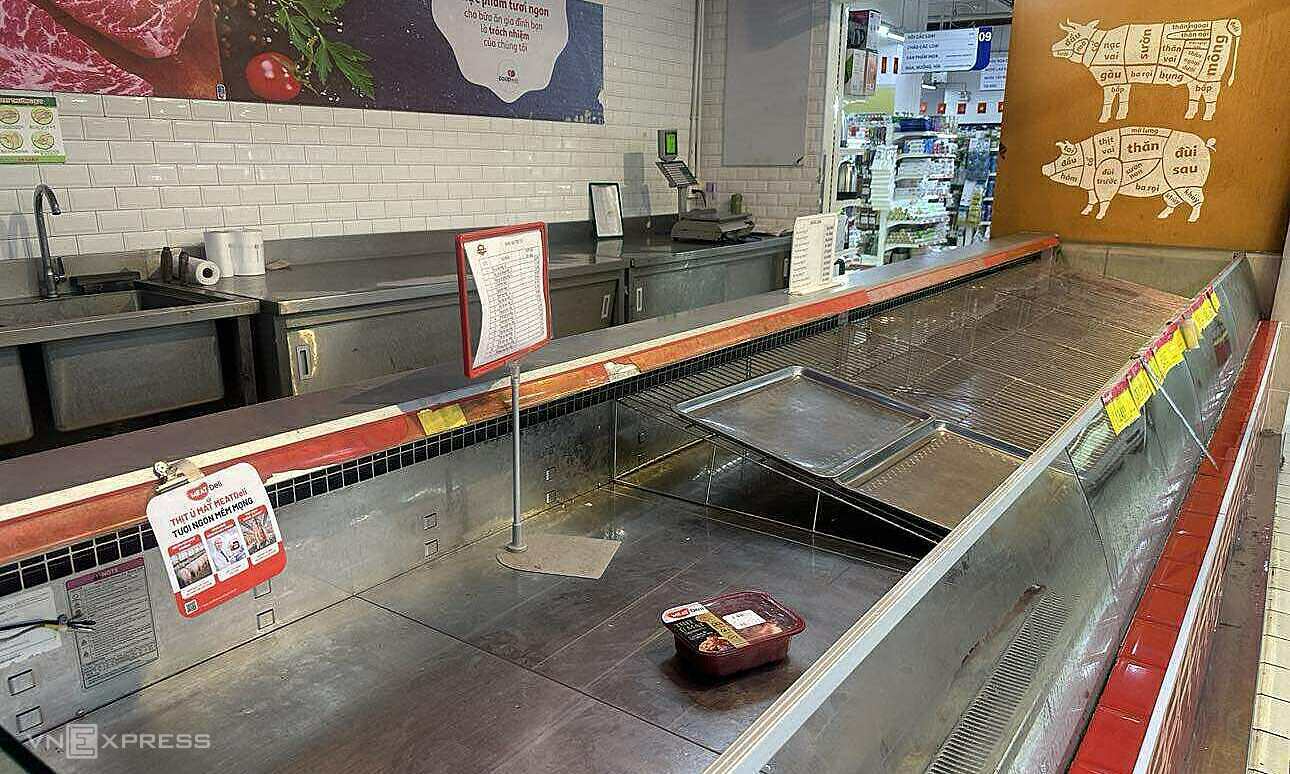Heavy rainfall overnight and on the morning of 26/8, caused by Typhoon Kajiki, brought traffic to a standstill in many parts of Hanoi and forced many businesses to close. Online orders surged, but deliveries were severely hampered.
Caught off guard by the sudden downpour and with local restaurants closed, Minh Ngoc, a resident of a Tay Mo apartment complex, struggled to order food delivery for her family. While prices on delivery apps remained stable, finding a driver proved impossible.
"I tried ordering through multiple apps for almost an hour, but no drivers accepted my order," Ngoc said. She eventually found a business delivering food within her apartment complex.
Hoang Tung, chairman of F&B Investment, which owns 6 PizzaHome and Com ga 68 outlets, reported a similar surge in online orders but a severe shortage of delivery drivers. This significantly impacted the company's online sales.
As a temporary solution, Tung said hotline staff encouraged nearby customers to pick up their orders. The company's supply chain remained largely unaffected thanks to pre-emptive stockpiling for the storm and the upcoming National Day parade rehearsals on 2/9.
 |
Closed shops and restaurants on the morning of 26/8 in a heavily flooded area of To Hieu Street, Hanoi. Photo: Anh Tu |
Closed shops and restaurants on the morning of 26/8 in a heavily flooded area of To Hieu Street, Hanoi. Photo: Anh Tu
Oanh Vu, marketing director of Miresto, which owns the The Gioi Hai San and Hatoyama chains, said all 18 of their locations were affected by the flooding, with staff unable to reach the restaurants. Some restaurants also suffered property damage from leaks and rainwater intrusion during the heavy downpour.
The company also experienced supply chain disruptions due to temporary transportation difficulties. However, Vu reported that the situation was stabilizing as floodwaters receded, and restaurants expected to offer 70-80% of their usual menu.
The flooding also prevented many suppliers from delivering food to restaurants, supermarkets, and other businesses.
After being told to work from home due to the flooding on the morning of 26/8, Ngoc Tan, a resident of the Tay Ho Tay urban area, went to the mini-supermarket in his apartment building's lobby to buy groceries. He was surprised to find the shelves completely empty of meat and vegetables before 10 a.m. The cashier explained that delivery trucks were delayed due to flooded roads.
Similar scenes played out in other stores and supermarkets, especially in western Hanoi. By late morning, a large supermarket in Kien Hung ward had only a few trays of pork left and some damaged cabbages remaining in the vegetable section. According to staff, the meat delivery truck had stalled in deep floodwaters, with new supplies expected in the afternoon.
 |
Nearly empty pork section at a large supermarket in Kien Hung ward on the afternoon of 26/8. Photo: Anh Minh |
Nearly empty pork section at a large supermarket in Kien Hung ward on the afternoon of 26/8. Photo: Anh Minh
Aeon Vietnam reported a 20-30% decrease in in-store shoppers at its department stores and supermarkets in Hanoi due to the flooding. Online orders, primarily for food and essential goods, increased. However, deliveries were difficult due to the persistent flooding. Aeon said it was working to deliver orders as quickly as possible.
Meanwhile, traditional markets in the Cau Giay and My Dinh areas maintained a relatively steady supply of goods. Prices for some vegetables increased by 10-15%.
Typhoon Kajiki made landfall in Nghe An and Ha Tinh provinces on the afternoon of 25/8, with winds of level 10-12. The typhoon battered central Vietnam, particularly Thanh Hoa, Nghe An, and Ha Tinh provinces, for over 10 hours, with maximum wind speeds of level 12 upon landfall.
On the morning of 26/8, the typhoon weakened into a tropical depression over Laos, with maximum wind speeds of 61 km/h (level 7), bringing heavy rain to northern and north-central Vietnam, including Hanoi, causing widespread flooding.
Anh Tu - Thuy Truong - Phuong Dung












